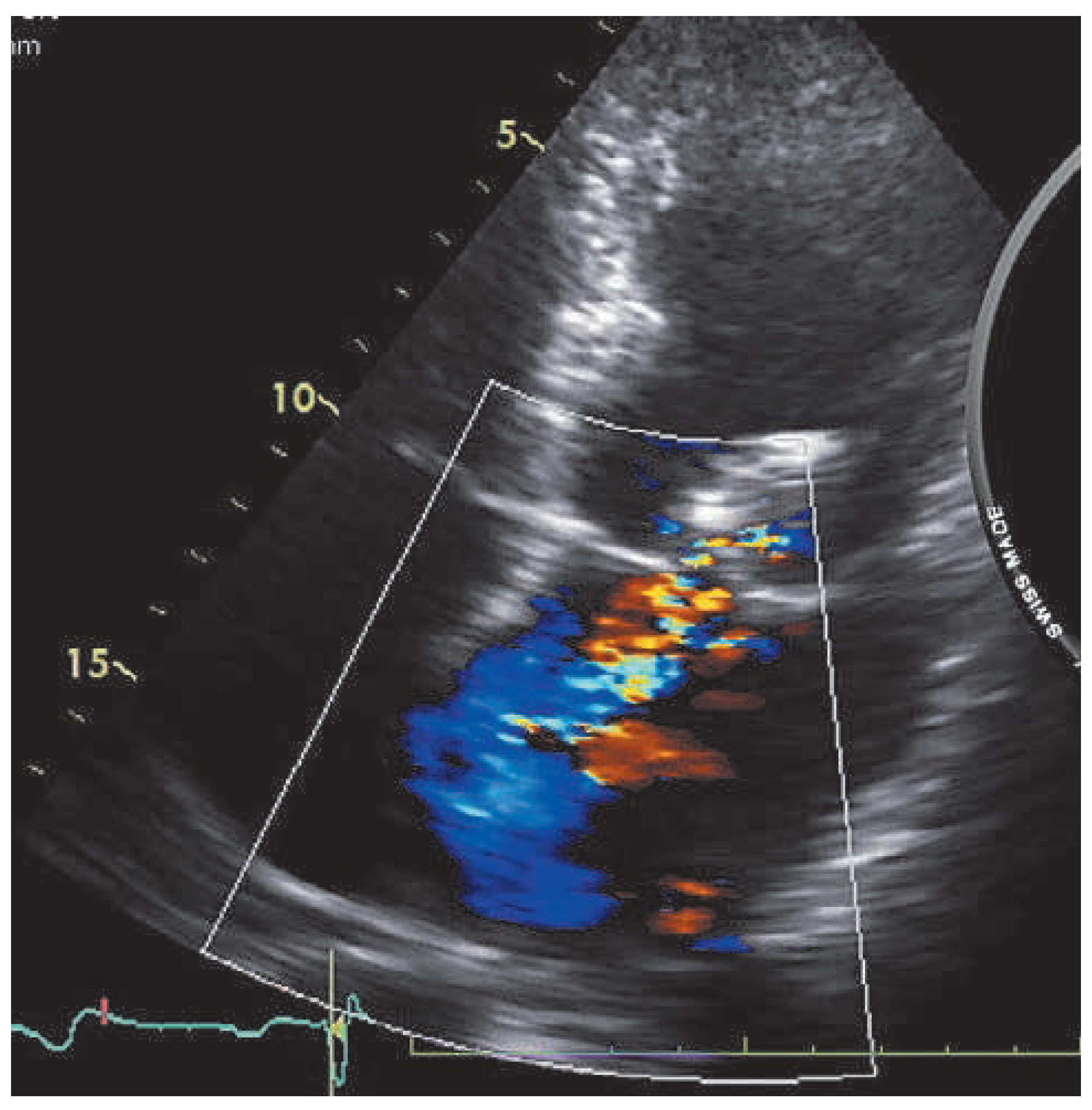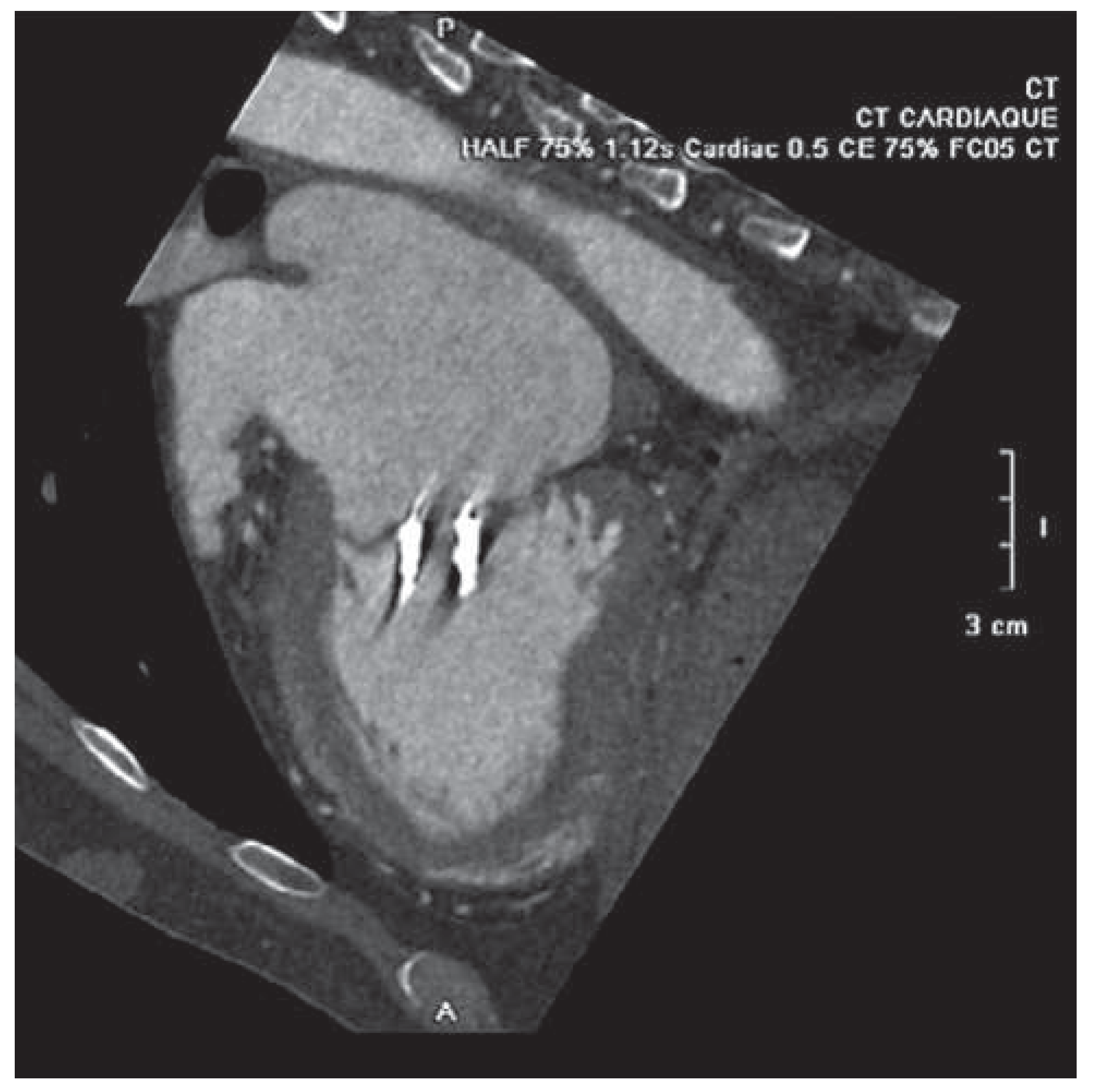MitraClip™: What Should Not Be Done?
Introduction
Case Report
Funding/Potential Competing Interests
References
- Mauri, L.; Foster, E.; Glower, D.D.; Apruzzese, P.; Massaro, J.M.; Herrmann, H.C.; EVEREST II Investigators; et al. Surgery for severe ischemic mitral regurgitation. 4-year results of a randomized controlled trial of percutaneous repair versus surgery for mitral regurgitation. J Am Coll Cardiol. 2013, 62, 317–328. [Google Scholar] [CrossRef] [PubMed]
- Glower, D.D.; Kar, S.; Trento, A.; Lim, D.S.; Bajwa, T.; Quesada, R.; et al. Percutaneous mitral valve repair for mitral regurgitation in high-risk patients: results of the EVEREST II Study. J Am Coll Cardiol. 2014, 64, 1721–1781. [Google Scholar] [CrossRef] [PubMed]





© 2014 by the author. Attribution - Non-Commercial - NoDerivatives 4.0.
Share and Cite
Coattrenec, Y.; Vanermen, H.; Khatchatourov, G.; Goy, J.-J. MitraClip™: What Should Not Be Done? Cardiovasc. Med. 2014, 17, 371. https://doi.org/10.4414/cvm.2014.00282
Coattrenec Y, Vanermen H, Khatchatourov G, Goy J-J. MitraClip™: What Should Not Be Done? Cardiovascular Medicine. 2014; 17(12):371. https://doi.org/10.4414/cvm.2014.00282
Chicago/Turabian StyleCoattrenec, Yann, Hugo Vanermen, Gregory Khatchatourov, and Jean-Jacques Goy. 2014. "MitraClip™: What Should Not Be Done?" Cardiovascular Medicine 17, no. 12: 371. https://doi.org/10.4414/cvm.2014.00282
APA StyleCoattrenec, Y., Vanermen, H., Khatchatourov, G., & Goy, J.-J. (2014). MitraClip™: What Should Not Be Done? Cardiovascular Medicine, 17(12), 371. https://doi.org/10.4414/cvm.2014.00282



